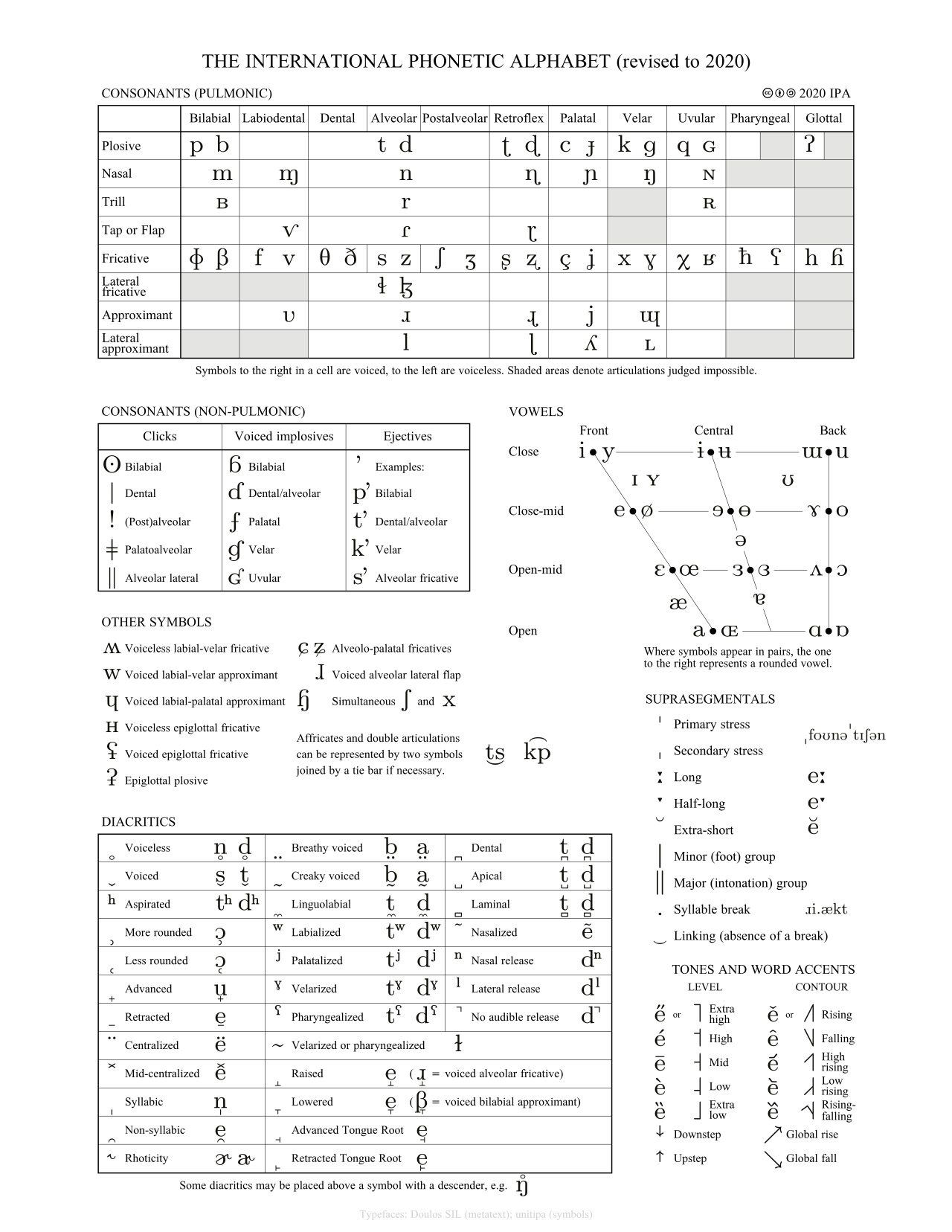Linguistics - Phonetics
Refactored from Linguistics Notes Meta
- Phonetics studies the sound of a language
- Linguistics use the International Phonetic Alphabet (IPA) to write down sounds precisely
- here’s a clickable IPA chart
- The part of the body that move to make language are referred to as articulators
- consonants that involves closing the vocal track; think staccato
- The IPA lists all the consonants found in spoken languages
 [^https://en.wikipedia.org/wiki/International_Phonetic_Alphabet]
[^https://en.wikipedia.org/wiki/International_Phonetic_Alphabet]
- The IPA lists all the consonants found in spoken languages
- vowels are made with the vocal track open; think sustains
- Vowel sound is a continuum, which means that changing the mouth shape can gradually change the sound. This depend on:
- How open the mouth is
- How high the tongue is
- How rounded the lip is
- The vowel space on IPA is a chart that plots these parameters
- A continuous transition between two vowels is called a diphthong and this is found in English and some other languages
- The vowel inventory refers to all the vowel sounds in a language
- Vowel decorations to further change a vowel’s sound
- Length as in [i:]
- Naselisation as in [bɔ̃]
- Tone as in Chinese
- Vowel sound is a continuum, which means that changing the mouth shape can gradually change the sound. This depend on:
- Phonology is the study of how different variations of language pronounce things differently
- phones are different sounds that are distinct
- phoneme are the individual sounds in a language that make words distinguishable from each other
- Technically different sounds for a phoneme that are treated the same in a language are called allophones
- For example, the [t] sound in team and steam use different amount of air but they are treated as the same phoneme
- Usually, there are patterns for which allophone is used depending on the word
- Sometimes people change the sound altogether to make saying a word easier, for example library
- Interesting phonetic phenomenons to help with Solving Linguistic Problems (in no particular order)
- “t” insertion between vowels
- Some languages like everything to sound connected so they insert extra consonants
- Example: French “a il” –> “a-t-il”
- “t” insertion between vowels